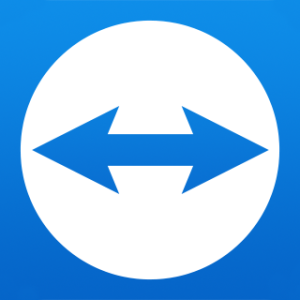What is our primary use case?
My primary use case for TeamViewer is all of my remote support. I use it throughout the organization for remotely supporting my accounting customers. I have a number of clients who use different ERP systems that I support and I use TeamViewer to connect to their computers, resolve issues, do work after hours, and provide remote training, etc.
I don't use a lot of any of their managed alerts or any of that kind of thing cause I'm on the intersection between IT and finance. But I'm definitely using it quite frequently, and I'm using it to generate billing as well through the TeamViewer logs.
I don't deviate a lot from the very standard usage. It's along the lines of, "Oh, a client is phoning." I answer the phone, connect to them remotely, resolve their issue, document what I did, and on I go. We don't use a lot of the sophisticated features of TeamViewer. We do programming, data repair, development, and troubleshooting, but as far as TeamViewer goes, we don't get fancy with it. We just want to make sure that we serve the client and then get paid for it.
How has it helped my organization?
With billing, when I initially started with TeamViewer, there was no automatic prompt for logging the details of the connection. Now, it has streamlined my process because every time I close a connection, there's an automatic window that pops up asking me what I've done. So immediately Joanne, who does the billing, is able to take that information and turn it into an invoice automatically, unless she has a question about it. It ensures that I'm capturing more of my work, so things don't get missed. It does that for me quite well.
That feature is saving me one or two hours on a weekly basis, but it's also ensuring that I'm not missing any connections. If I had two hours of missed connections, I would miss $250, so it's ensuring that I'm billing that $250 a week that might otherwise get missed.
What is most valuable?
Every now and then I will do remote training with it. Those features are quite good.
Overall, it's pretty simple and pretty straightforward, and that's one of the things that I like about it. It's also fairly light on the client's end because, most of the time, when I'm phoning a client, they're not technically strong at all. They need something that's just absolutely dead-simple to install.
That's one of the reasons why I went with TeamViewer over some of the other technologies I was looking at. Ease of use was the number-one thing. It's an industry leader for ease of use, specifically on the client-side, which is the absolutely critical thing. If I want to connect to somebody, how easily can I — without seeing their computer — walk them through the steps to install it to a point where I can key in the code and help them resolve their situation? People are phoning because they're already panicked about something to do with technology. If I have something else that's technologically challenging that they have to do before I can help them, that exacerbates the situation rather than helping it. TeamViewer is just a dead-solid, easy answer.
TeamViewer also has great support for multi-monitor. I can have a whack of connections open at the same time.
What needs improvement?
Speed and performance have been addressed. I know there was a security blip a few years ago and they now do the extra authentication, which I appreciate and clients appreciate.
I haven't had the contact TeamViewer in so long. When I originally started with TeamViewer, they didn't prompt the user to log the details of the connection. You'd have to manually go back into the TeamViewer Manager and log your comment, after you had closed it. Then you'd go back into TeamViewer, go to that connection and assign a comment to it, which I would sometimes forget to do, especially if I was jumping from call to call to call. I sent in a feature request asking them to add the prompts and I'm sure other people sent in the same feature request. They did that many years ago.
For how long have I used the solution?
I have been using TeamViewer since version 5, so it would have been the first month or week that I started my business, which would be seven or eight years ago.
What do I think about the stability of the solution?
The stability has been very good to excellent. Every now and then you'll get a silent crash and you relaunch the application. But it happens no more than with anything else in the Windows environment.
What do I think about the scalability of the solution?
It has organizational tools and it's nicely scalable. If I grew the business to 30 or 50 people, consultants, it would still be an excellent solution.
The only time I'd need to expand the technology is if I hire. If I hire another person, I likely wouldn't even increase the channel usage right away because it's based on concurrent usage. Joanne is an intermittent user, so we're not looking for anything extra right now.
There is TeamViewer's ITbrain that we could look into more but, again, it's not really something that we do. I stay in my lane with the accounting software. I'm not looking to manage my clients' IT infrastructure or to manage their PCs. If I see something that's out of the ordinary, 90 percent of my clients are going to have an IT person who handles that side of things. I handle anything that has to do with inventory and accounts receivable, and general ledgers, and debits and credits, and accounting software. Anything that touches on those things, then I'm in. But if they're having problems with their computers running slowly, I refer that out.
How are customer service and support?
The few times I've had to use technical support, it's been fine.
Which solution did I use previously and why did I switch?
Very briefly, in the first three weeks of the business, there was another tool that I used. Then I used TeamViewer and I've never stopped. I can't remember what that other tool was called. It was more of a standalone kind of product. It was cheaper than TeamViewer.
I switched because TeamViewer was robust. I also felt safer. I was going to be installing the program at clients' places and I didn't want to introduce anything that might be difficult. It is easy to use for clients. Although I've got it installed on my network of eight or nine machines, I have connections to hundreds and hundreds of other computers — some 500 other computers at my clients. I wanted to make sure I was installing something that was not taking up too much memory on their machines, that was stable and secure. I didn't want something that was at all suspect. I wanted solid and robust.
How was the initial setup?
The initial setup was quite straightforward. It just needed to be installed on five or six machines inside the domain, and on a couple of machines at home. I then continued to roll it out to clients and through links to it in my email signature. Deploying TeamViewer across the various environments was really straight forward and easy. There was no implementation strategy required.
The only thing I had to watch for was if my clients were already using TeamViewer or if they had another company that does not have a certain version of TeamViewer. Suppose I have a client which uses an IT company to handle their network infrastructure and computers, and that company has TeamViewer 11 or 12, while I have TeamViewer 14. I have to be careful to make sure that the client is always installing TeamViewer 11 or 12 — whatever version they have. One of the things I find that is really easy about it is that, with TeamViewer 14, I can connect to any older version. But you can't connect to a newer version from an older license. If somebody is using TeamViewer 12 and, for whatever reason, they haven't renewed their license, they can't connect to TeamViewer 14 installations. I have to remember to play nice if somebody has a limitation like that.
But for me, it's just dead-simple. The client installs the most current version and I'm off to the races. That's one of the reasons why I pay them money every year. Deployment takes ten minutes per machine. I call them "gravity installs." Next, next, next, next, next.
And I'm the only one who maintains it.
What was our ROI?
It's inefficient to travel. Without any remote support solution, if I drive out to a client, do some work, and drive back, I have the prep time and the clean-up time. I have to get gas in the car. There are all those overhead things. I go out, do three hours of billing, and charge for an hour of travel time. But it really takes most of the day. But with some kind of remote support solution, I can be concurrently overlapping my billing. If I've got a busy day on TeamViewer, for example, I can end an eight-hour day with 12 hours of billing, easily. Comparing those cases — no solution versus having a remote support solution — the ROI could be $50,000.
But compared to if I had a different remote solution in place, the efficiencies I've seen in TeamViewer, and the way that it traps things, would be saving me closer to $3,000.
If we're talking about a strict ROI, I would use the $50,000 number because there'd be ROI with that competing product as well. It allows me to be 20 percent more efficient.
Before implementing TeamViewer, I could support one person at a time over the telephone. After implementing TeamViewer, the most I've ever had were about ten connections at once. For practical purposes, it depends on your level of attention. You can be doing as many things as you want concurrently, and multiple billing if it's appropriate. But you're limited by your own attention span. I run with four large monitors on my desktop, so I've got the real estate. I can have little TeamViewer windows all over the place.
What's my experience with pricing, setup cost, and licensing?
Every now and then, I hear people complain, "Oh, it's pretty expensive," because it will cost you $1,500 to $1,600 a year, but when I think of how much work I do through TeamViewer...
Which other solutions did I evaluate?
I looked at LogMeIn Rescue and PC Anywhere in addition to TeamViewer.
At the time, TeamViewer was a version license, whereas LogMeIn was a subscription. But one of the big things that really drove me to TeamViewer was seeing how much of the resources it was using on a computer. I installed both solutions and looked at them from the point of view of the client. I looked at the resource usage when they were running and the performance. That's what sold me: the interface and the performance.
What other advice do I have?
The biggest lesson that I've learned from using TeamViewer is probably the ROI lesson. I used to work for another company and I ended up buying the client list from them. There was not a lot of remote support happening at the time. In fact, I helped them usher in the remote support era, but they were still very much on a drive-out-to-the-client paradigm. It used to drive the boss crazy when he'd see me sitting in the office a lot. He always thought sitting in the office was a bad thing. Then he looked at the billings and found my billings were way higher than anybody else's. He would ask, "Why are you in the office so much?" The biggest thing is I learned that sometimes there are better paradigms for work. It's more efficient. It's better for the client and it's better for me. If I have a client who has an issue, I could drive out there, answer three questions, drive back, and send them a bill for a minimum one hour on-site and a minimum for travel charges. Or I can remote-in, connect, solve a problem, log off, and they know that they're getting a bill for 15 minutes. It's way better. There are ways to be efficient. Work smarter, not harder.
If you're looking to implement TeamViewer, just point to the website and go download it.
I install it all on-premise. When I'm working with a client, if they don't have TeamViewer installed, I'll just walk them through very quickly installing TeamViewer on their session and then remotely connect to them, attach, and help them with whatever their problem-du-jour is.
My users use it almost exclusively on Windows PCs. I have connected to a Mac probably one or two times in about eight years, and I have connected from my phone to a client twice. Because I'm working on ERP systems that work in the Windows environment, I don't have much cause to jump on to anything other than a Windows PC. The times that I have had to jump onto a Linux machine or a Mac, I found that the interface is consistent and it doesn't present any problems.
We have three people using it in the organization. We're a small company. Their roles are report developer, administration, and tech support. I'm the support team. The company is me, my wife, and my sister. My wife does the administration and the billings. She uses TeamViewer to view the connection logs and see what she should be charging. My sister uses it, as our Crystal Reports developer, to upload reports to the client, making sure that things are configured correctly and adjusting reports. She's remotely attaching with no intervention from the client's side. I do everything in between. I will phone the client, connect, do training remotely, remote support. I'll upload programs or do troubleshooting. I also do a blend of "guided," where the client is on the other end and is watching what I'm doing. I also use it after-hours where the client's not involved. It solves both of those things. We're a small organization, but it definitely serves our needs.
TeamViewer has matured nicely over the seven or eight upgrades. Now, I just expect them to be doing performance and security. It's got the full feature set that I'm looking for. But computers are complicated ecosystems with tons of challenges, so I just expect that they're going to continue paddling beneath the surface. I don't care if I don't see a lot of extra bells and whistles, I just want to know that it's still secure and fast and doing things the right way.
It's feature-rich and easy to use. It's an excellent product. It's a product that is really deeply integrated into our daily workflow.
Realistically, is there anything more that I would want from it? It does what it's supposed to do and it does it reliably. It would be unfair not to give it a ten out of ten.
*Disclosure: PeerSpot contacted the reviewer to collect the review and to validate authenticity. The reviewer was referred by the vendor, but the review is not subject to editing or approval by the vendor.








